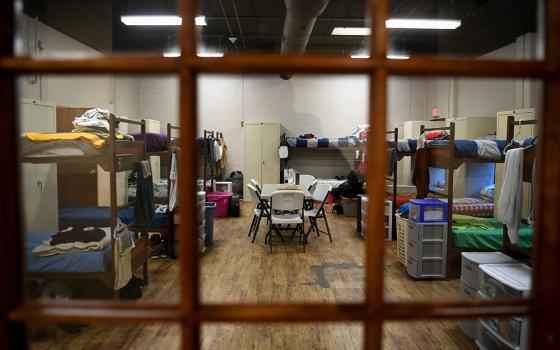Today, we celebrate the oldest and first-ranked of Rome's four great basilicas. St. John was surnamed "Lateran" because it stands on the site of the palace of the family of the Laterani. During his reign as emperor, Constantine gave the palace and its lands to the church in 311. A church council was first held at the Lateran in 313. A papal residence until the scandal of Avignon, St. John is considered the cathedral of Rome and the mother church of Christendom. From the 12th century, this day, Nov. 9, has been observed as the anniversary of its dedication. Through the centuries, the Lateran has been damaged by earthquakes (443, 896), attacked by Vandals (455), attacked by the Saracens (eighth century) and destroyed by fire (1308, 1360). After each event, the Lateran was rebuilt and refurbished.

| Dedication of the Lateran Basilica |
| Ezekiel 47:1-2, 8-9, 12 Psalm 46 1 Corinthians 3:9c-11, 16-17 John 2:13-22 |
Visitors to the Lateran will see the hexagonal baptistry, which was the only one in all of Rome for quite some time, and thus can appreciate the solemnity with which baptism was celebrated in the early church. This fact brings us to the reason why we celebrate one of Christendom's most beautiful and venerated churches -- not because of its triumphal arches and colonnades, not because of its majestic baldachino or its famed mosaics. We celebrate not the place alone, but the baptized believers, the ekklesia or gathering of people whose presence makes that beautiful space holy.
By virtue of the early believers' faith, which drew them together to offer praise and thanksgiving to God, the places where they met were sanctified. Remembering the words of Jesus -- "Where two or three are gathered in my name, there am I in their midst" (Matthew 18:20) -- they came together in grassy places, on riverbanks and in their homes to learn and to pray. In times of persecution, the early believers met in the catacombs, and even that place where the dead were buried became holy by virtue of their prayer in the presence of Jesus.
Three centuries before the first church building was erected, Paul (second reading) impressed upon his converts in Corinth that they were "God's building," for which Paul, by grace, had laid the foundation: Jesus Christ. Because of the presence of the Spirit within them, that building has become a holy place, a temple.
Paul's words challenge us to consider how well we have preserved the sanctity of our own temple. Ordinarily, people enter temples to be in the presence of God. Do people sense the presence of God within us? Does our way of life reflect the fact that the very Spirit of God dwells within us, inspires us, animates and directs us? Do we treat our bodies with the reverence due a living temple of God? Similarly, do we respect and revere our brothers and sisters, who are also dwelling places of our good and gracious God?
If our behaviors are less than worthy of our spiritual status as living temples, perhaps we might take a page from Jesus' book and allow ourselves to be purified and rededicated to God. In today's Gospel, we watch as Jesus drives out those whose actions were unworthy of Jerusalem's holy temple. We listen as Jesus answers the Jews' request for a sign that would validate his words and actions. "Destroy this temple and in three days I will raise it up," he declared. Later, after the temple of his body was desecrated on the cross and after he rose glorious from death, the disciples remembered his words and believed in him.
We who believe in Jesus are responsible for being holy places where others will find God. But we are also church, a community of believers who are to offer collective witness of integrity, justice, mercy and love to all the world. Ours is to be the voice that speaks out for what is right, defends the dignity of the poor and disadvantaged, and prays to God for guidance and grace.
When he was offering his congregation a vision of the church, Henry Ward Beecher said, "Some churches are like lighthouses, built of stone, so strong that the thunder of the sea cannot move them -- with no light at the top. That which is the light of the world in the Church is not its largeness, nor its services celebrated with pomp and beauty, nor its music, nor the influences in it that touch the taste or instruct the understanding: it is the Christ likeness of its individual members."
As we celebrate the mother church of all Christendom, let us remember that the church is Jesus Christ, as head, united with all the members of his body. The church is the temple of the Holy Spirit, the light of the world and the place where all are to be welcomed as God's beloved sons and daughters.
[Patricia Sánchez holds a master's degree in literature and religion of the Bible from a joint degree program at Columbia University and Union Theological Seminary in New York.]



